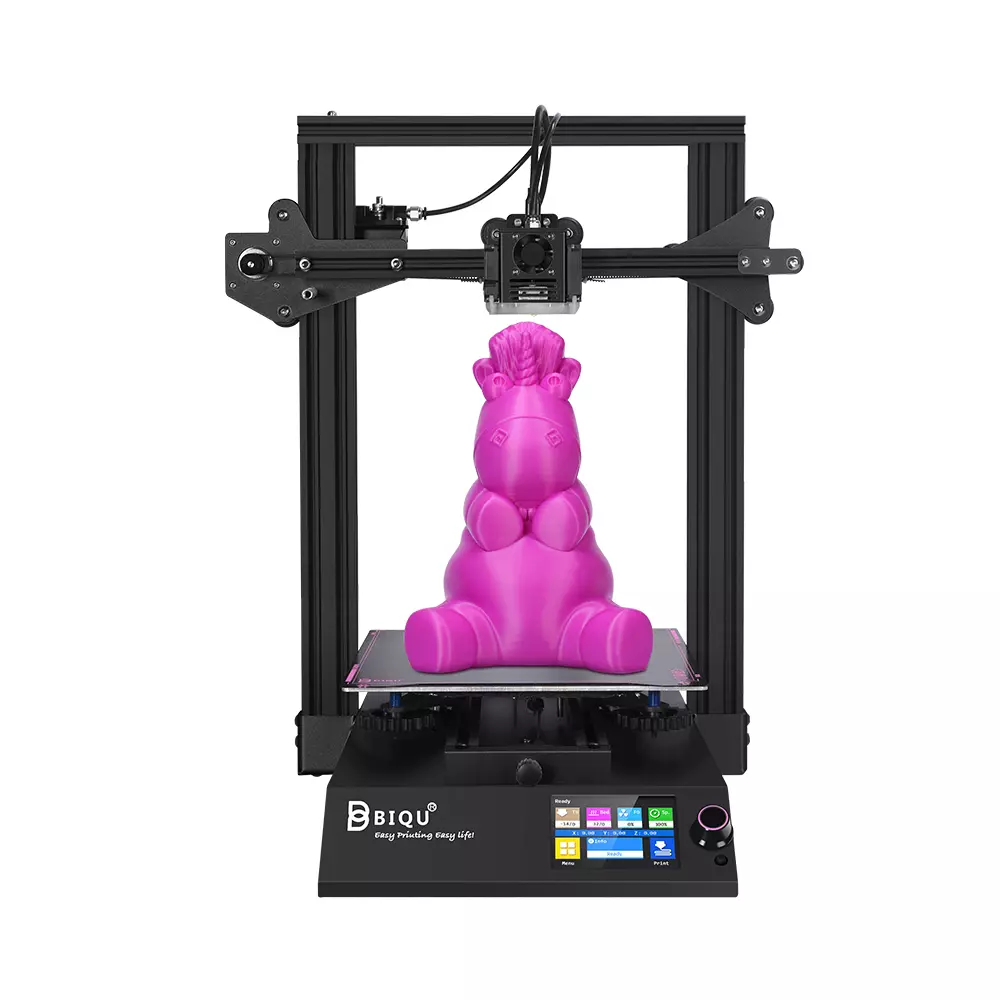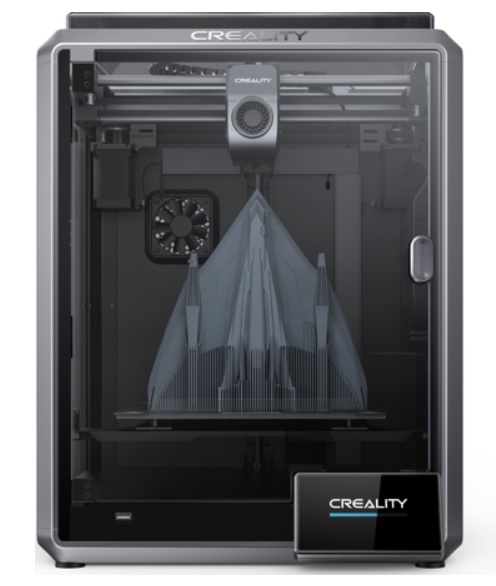Compare Ender 3 vs BIQU B1 vs K1
Comparison between the best 3D printers
Choose the best 3D printer at the best price. The cheapest 3D printers are here.
Buy a 3D printer here with 3D Fila.
 |
 |
 |
|
| Model | Ender 3[BUY Ender 3] |
BIQU B1 |
K1[BUY K1] |
| Printing Material | Filament | Filament | Filament |
| Estimated price | $210,00 | $269,00 | $399,00 |
| Fabricante | Creality 3D | BigTreeTech | Creality 3D |
| Release Year | 2018 | 2020 | 2023 |
| Print Volume [mm] | 220x220x250 | 235x235x270 | 220x220x250 |
| Printer Size [mm] | 440x440x465 | 412x402x492 | 355x355x480 |
| Weight [kg] | 6,62 | 8,00 | 12,5 |
| Power Loss Recovery | NO | YES | YES |
| Enclosed printer | NO | NO | NO |
| Bed Leveling | Manual | Manual | Automatic |
| Filament End Sensor | NO | YES | YES |
| Bed type | Heated | Heated | Heated |
| Power supply system | Bowden | Bowden | Direct Drive |
| Standard nozzle | 0,4 | 0,4 | 0,4 |
| Maximum Nozzle Temperature [°C] | 255 | 250 | 300 |
| Maximum Bed Temperature [°C] | 110 | 100 | 120 |
| Maximum printing speed [mm/s] | 180 | 100 | 600 |
| Filament holder | YES | YES | YES |
| Camera for supervision | NO | NO | YES |
| Recommended filaments | PLA, TPU, ABS, PETG | PLA, TPU, ABS, PETG | ABS, PLA, PETG, PET, TPU, PA, ABS, ASA, PC, PLA-CF, PA-CF, PET-CF |
| Recommended slicers | Cura, Simplify, Slic3r | Cura, Simplify, Slic3r | Creality Print; Cura, Simplify3D e PrusaSlicer |
| Maximum Resolution [mm] | 0,1 | 0,1 | 0,1 |
| Processor | 8 bits | 32 Bits BTT SKR V 1.4 | |
| Display | Mono | Touchscreen TFT 3,5'' | Display touchscreen 4,3'' |
| Power Supply | 24V / 270W | 24V / 360W | 110/220V / 350W |
| Connectivity | SD / USB | SD / USB | Ethernet / USB / Wi-Fi |
| Operating systems | Windows, Mac, Linux | Windows, Mac, Linux | Windows, Mac, Linux |
| Date of registration in the system | 2021-04-13 | 2021-04-14 | 2023-04-17 |
| Release date | 2018 | 2020 | 2023 |
| Extra features | The Ender 3 V1 is a DIY assembly 3D printer, a sales leader since 2017, standing out for its cost-benefit. With a wide printing capacity, it has a CNC machined structure for precision and stability. It offers high-precision prints with low noise, thanks to its innovative V-profile and pulleys. It has a self-adhesive magnetic platform for easy removal of models and excellent adhesion. The Ender 3 heats up quickly, reaching 100°C in 5 minutes, ideal for agile prints. It includes protection against power failures, allowing you to resume printing after interruptions, saving time and material. | The BIQU B1 is an advanced 3D printer with a silent 32-bit BTT SKR V1.4 motherboard and ARM Cortex-M3 CPU, offering DIY interfaces (I2C, SPI, WiFi) and dual Z-axis. Its dual BTT B1 TFT35 V3.0 operating system allows real-time monitoring and multiple printing modes, including G-code visualization effects. It stands out for its BIQU SSS (Super Spring Steel), ensuring easy model adhesion and simplified removal, with the possibility of using it on both sides. It includes a filament sensor, automatically pausing printing in case of filament breakage. The multicolored RGB lights integrated into the hotend allow you to view the printing status even at night. Additional notes include the need for a BIQU-specific Type-C cable and extra interfaces for smart filament sensor and BL Touch. | The K1 is an extremely fast FDM 3D printer, reaching 600mm/s, 12 times faster than standard models. Equipped with a Core XY system and lightweight print head, it offers energy efficiency and high print quality. It stands out for its dual-gear extruder and quickly heated hotend, as well as dual cooling to prevent warping. Its robust structure ensures stability at high speed, with optimized software to speed up the printing process. |
| Support for multiple colors and materials (AMS and CFS) | NO | NO | NO |
Notes * |
|||
| Cost-benefit | 6 / 10 | 7 / 10 | 7 / 10 |
| Hardware | 0.5 / 10 | 2 / 10 | 4.2 / 10 |
| Screen | . | . | . |
| Print volume | 3 / 10 | 3 / 10 | 3 / 10 |
| Performance | 1 / 10 | 1 / 10 | 5 / 10 |
| [BUY Ender 3] | [BUY K1] |
Conclusion |
| In conclusion, when comparing the three 3D printers—Ender 3, BIQU B1, and K1—it's clear that each model has unique strengths tailored to different user needs. The **Ender 3**, with its affordable price and proven reliability, remains an excellent choice for beginners or those on a budget. Its solid print volume and ease of assembly make it a popular option, although it lacks some features like power loss recovery and automatic bed leveling. On the other hand, the **BIQU B1** offers advanced features such as a 32-bit motherboard and a dual Z-axis, making it a strong contender for those seeking quiet operation and enhanced connectivity options. It also includes a filament sensor, providing an extra layer of convenience. However, it comes at a higher price point than the Ender 3, which may not justify the additional functionality for all users. The **K1**, while the most expensive of the three, boasts exceptional speed and advanced features, including automatic bed leveling and a camera for supervision. It is designed for users who require high-performance printing and are willing to invest in speed and efficiency. However, its relatively high cost may be a drawback for hobbyists or those new to 3D printing. In summary, the best choice depends on your budget and specific printing needs: the Ender 3 for entry-level and cost-effectiveness, the BIQU B1 for a feature-rich experience, and the K1 for high-speed, professional-grade performance. |

